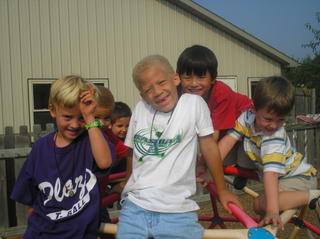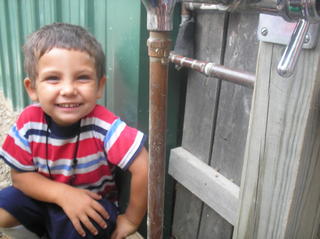Mmegi Press
Can ICT Help Achieve Education for All?
Last week’s IFIP World Information Technology Forum (WITFOR) addressed 12 major goals within the framework of the UN’s Millennium Development Goals. One of these was to develop ICT-based alternative educational delivery systems to achieve Education for All targets.
We recognise the importance of teachers in the dissemination of ICT knowledge and propose enhancing the ICT competence of teachers in the developing world through establishing innovative learning and knowledge communities of teachers and defining a professional development model to enhance ICT competence of teachers in order for them to utilise ICT in pedagogically meaningful ways.
A project proposal related to this goal reportedly involves Helsinki University of Technology, the Universities of Helsinki, Mauritius, Botswana and Geneva – through appropriate Centres at each – as well as Botswana’s Ministries of Education, and of Science and Technology.
The project has two objectives. The first is to establish innovative learning and knowledge communities of teachers. The second is to establish a professional development model to enhance ICT competence of teachers in the SADC region in order for them to utilise ICT in pedagogically meaningful ways in schools and other educational institutions.
Essentially, ICT offers a hopefully improved methodology of propagation and acquisition of wider knowledge, based on the knowledge and practice of ICT itself.
How ICT will help achieve Education for All depends to some extent on what one understands Education for All to mean and imply. It surely isn’t just about numbers at different levels of the education system. Does it include Early Childhood Education, Tertiary Education, and Technical as well as Academic Education? And does it incorporate learning of both Skills as well as Knowledge, in other words linking of Theory and Practice?
I tend to the view that Education for All should have a clear, universally applicable, broad objective related to the all-round development of heads, hearts and hands, and the promotion of good health of everyone to the highest level each of us is capable of. In my view, that should be Education for Work and a Better Life for All.
I have argued for the best part of thirty years for the combination of teaching and learning of academic and technical skills, of sociological as well as scientific and technical knowledge, and of whatever mental and manual skills are vital to lifelong practice and useful benefit.
Some sociologists see education as a means by which society reproduces itself but we need to see it as a means by which it can uplift itself and offer better lives to all its people.
Every society needs its professionals and engineers, but also its technicians and artisans, even in an age of automation. We can’t at least not yet rely totally on robots to do our plumbing, attend to electrical faults, repair our vehicles, fix our TVs and telephones and cell phones, and build and repair our roads, homes and offices. We have to rely on, and respect, those with such skills, and to give them the best affordable training.
These days, our motor vehicles are automated, but we still need a mechanic in the garage to fix them. The last and most recent US space flight was potentially endangered by a piece of flapping material on the outside of the spaceship, that one of the astronauts had to go out and repair by hand!
Besides professionals, engineers, technicians and artisans, we need both social and commercial entrepreneurs, and managers of both state and private enterprises to produce as many of the goods and services we all need in this day and age.
If recent analyses of the economy in other publications are correct, we may be losing expatriate managers and entrepreneurs, and perhaps people with technical skills, who are not easily or quickly replaced by qualified locals.
It seems to me that technical training lags behind our needs, and we didn’t need to start turning Brigades into more costly technical colleges. If we want our economy to expand, we need to train more technically and professionally qualified personnel, through new institutions as well as existing ones that we are busy renaming and/or taking over.
The desired expansion and vocationalisation of education and training, and the engagement in useful activities of learners in early childhood education, will be expensive and in ordinary circumstances may be beyond the means of the State. That is why it may be necessary to draw on the Productive dimension of EwP to generate income, or otherwise create resources through use of the labour of those being taught and trained, as Brigades did.
The first challenge to ICT in this context is to devise means to improve teaching and learning of practical skills – and more especially to strengthen education and training with production.
Too many students who go through schooling and higher education fail to find employment because their pass levels are below those required to get jobs ˆ pass levels that put the blame on them as failures, and not on society.
As a result, the more we expand the education system, the greater are the number of those who don’t pass well enough, or simply fail.
EwP would test and rate students, not by exclusive examinations designed to select and reject in highly academic curricula, but by continual assessment of theory and practice in life-related and modern curricula and related practical activity.
If ICT can address this, it would have done the Nation a great service. If, moreover, it can reduce poverty through its appropriate use, the more it does so, the better.










